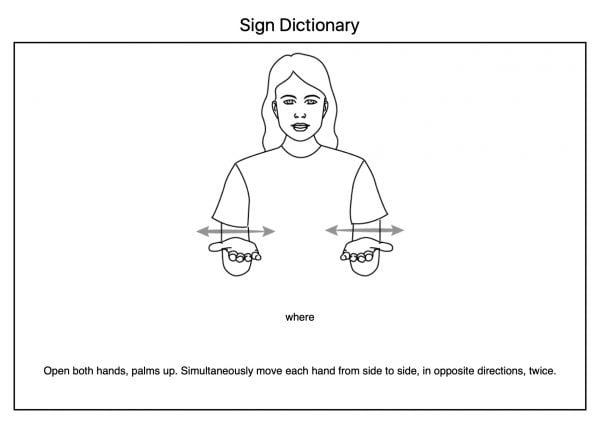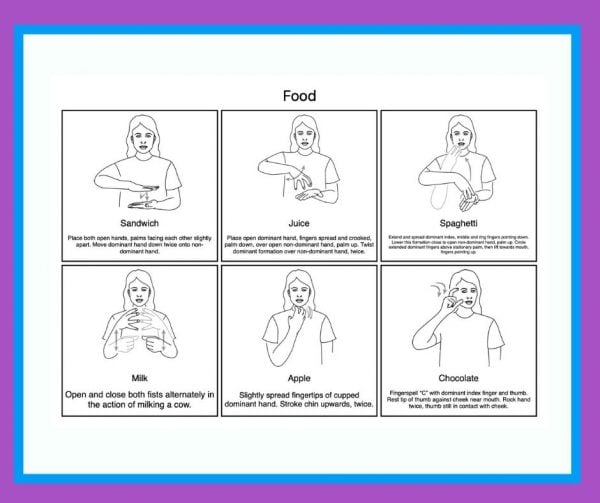
Natural Gestures (like pointing and waving hello/goodbye) and Key Word Sign (the use of basic sign language alongside spoken language) are a great visual you can add to communication with your child. And the best part is the tools are always with you.
Let’s think about how child communication typically develops. Before words children use gestures (like pointing) to let you know what they want. These gestures usually prompt parents to ask the child questions (like “what do you want”) which they, the parents, then answer (e.g. “oh you want a cookie). These exchanges naturally get adults to model language for children to learn from.

Key Word Sign and Natural Gestures can be used in the same way.
The GOOD NEWS is we can use them to both help children understand what we are saying to them, as well as, giving them an extra way of expressing themselves.

That’s right your child doesn’t have to have additional communication needs to be supported by Key Word Sign and Natural Gestures. But if your child does have these needs (e.g. late talker, Autism Spectrum Disorder, Apraxia or unclear speech, or an AAC user) they will definitely appreciate the boost it gives them.
Benefits:


Choosing your starting sign really depends on your family’s needs. A good starting point are core vocabulary words. These are the words that make up roughly 80% of what we say (making them perfect key words!). Choose a sign that is motivating for your child! Making sure you follow their interests when teaching new words and signs is essential. For example, your little one loves snack time. You could choose “more” “yummy” or “eat” as your first sign.
Here is a core word sign grid from Scope and Key Word Sign Australia to give you some more ideas.

And some food and animals signs for some more personalised options.



So you’ve picked your starting sign. Let’s say you picked “more.”
You could use this sign any time you are offering something desirable to your child. Give them a small amount of the desirable item. Wait. Ask them “More?” while modelling the sign. Wait. Ask again “do you want more?” while modelling the sign. Wait. Give them the item (too many repetitions of this without the reward will likely lead to a frustration or disinterest).
Some examples of desirable items are:
Tips and Tricks:
Your speech pathologist can help you to learn and embed Key Word Sign and Natural Gesture into your child’s therapy plan.
Below are some handy resources you can use at home:
The Scope website also has more information on formal workshops with Key Word Sign Australia available for parent and professionals alike.
The Key Word Sign (KWS) app is also available from the apple store. This is a paid resource, but allows you to create a sign dictionary for your child (important if you need to adjust from standard signs due to motor difficulties).
Signbank is also a great free resource. It is the online Auslan (Australian sing language) dictionary and gives video examples to learn signs from.

Remember you only need 1 sign to get started. Choose a sign, use it often, be patient.
If you liked this blog you might like some of our other early language blogs (linked below)
My toddler isn’t talking yet… how do I teach him some words?
Building Language through Book Reading
Finding opportunities for language learning in every day: A busy family’s guide